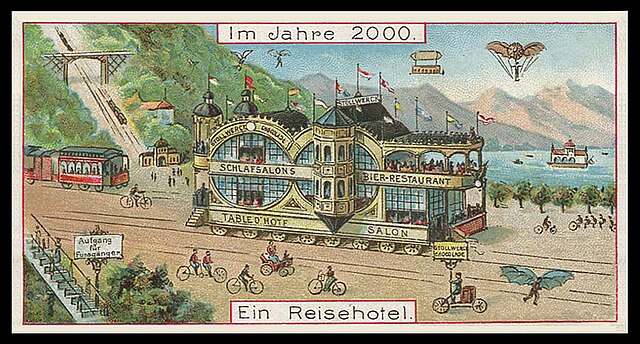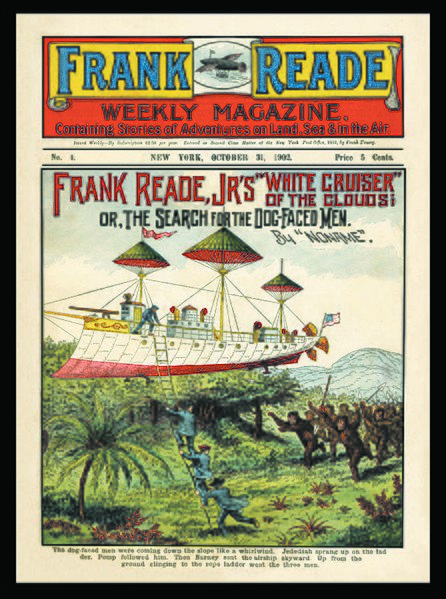Since the advent of the cyberpunk genre, a number of cyberpunk derivatives have become recognized in their own right as distinct subgenres in speculative fiction, especially in science fiction. Rather than necessarily sharing the digitally and mechanically focused setting of cyberpunk, these derivatives can display other futuristic, or even retrofuturistic, qualities that are drawn from or analogous to cyberpunk: a world built on one particular technology that is extrapolated to a highly sophisticated level, a gritty transreal urban style, or a particular approach to social themes.
Victorian-style attire with a steampunk mechanical arm
Dieselpunk
Cover of Atomic War number one, November 1952
Retrofuturism is a movement in the creative arts showing the influence of depictions of the future produced in an earlier era. If futurism is sometimes called a "science" bent on anticipating what will come, retrofuturism is the remembering of that anticipation. Characterized by a blend of old-fashioned "retro styles" with futuristic technology, retrofuturism explores the themes of tension between past and future, and between the alienating and empowering effects of technology. Primarily reflected in artistic creations and modified technologies that realize the imagined artifacts of its parallel reality, retrofuturism can be seen as "an animating perspective on the world".
Retrofuturistic depiction of a flying locomotive, visually based on the Nebraska Zephyr, in a dieselpunk style reminiscent of the early 1940s
Proposed high-speed ocean express ("Ozeanreise im Jahre 2.000") as in the year 2000, 1931 (Hamburg - New York in 40 hours)
Hotel on tracks ("Reisehotel") as in the year 2000, work of 1898
Sailing ship airborne ("White Cruiser of the clouds"), 1902






